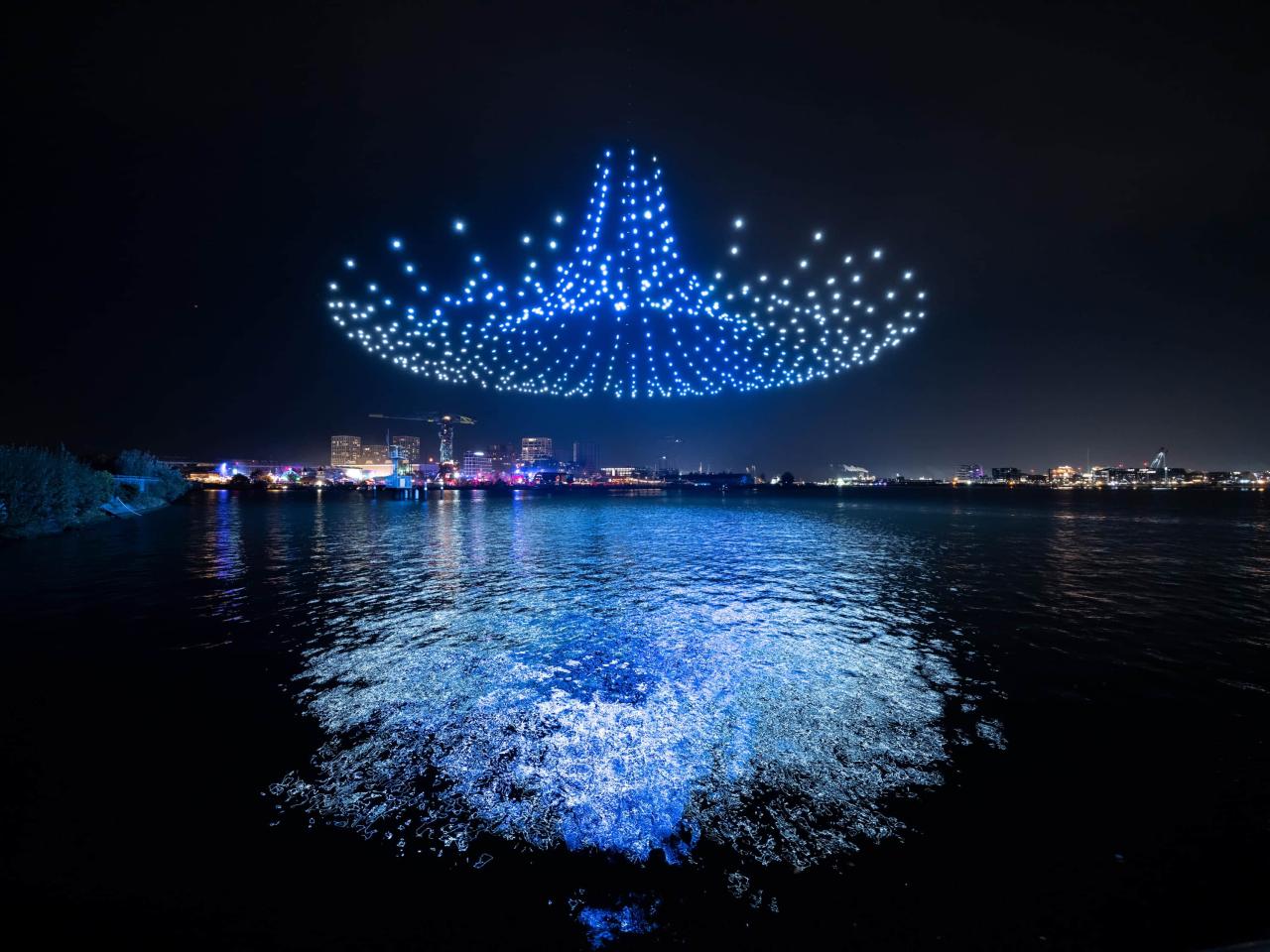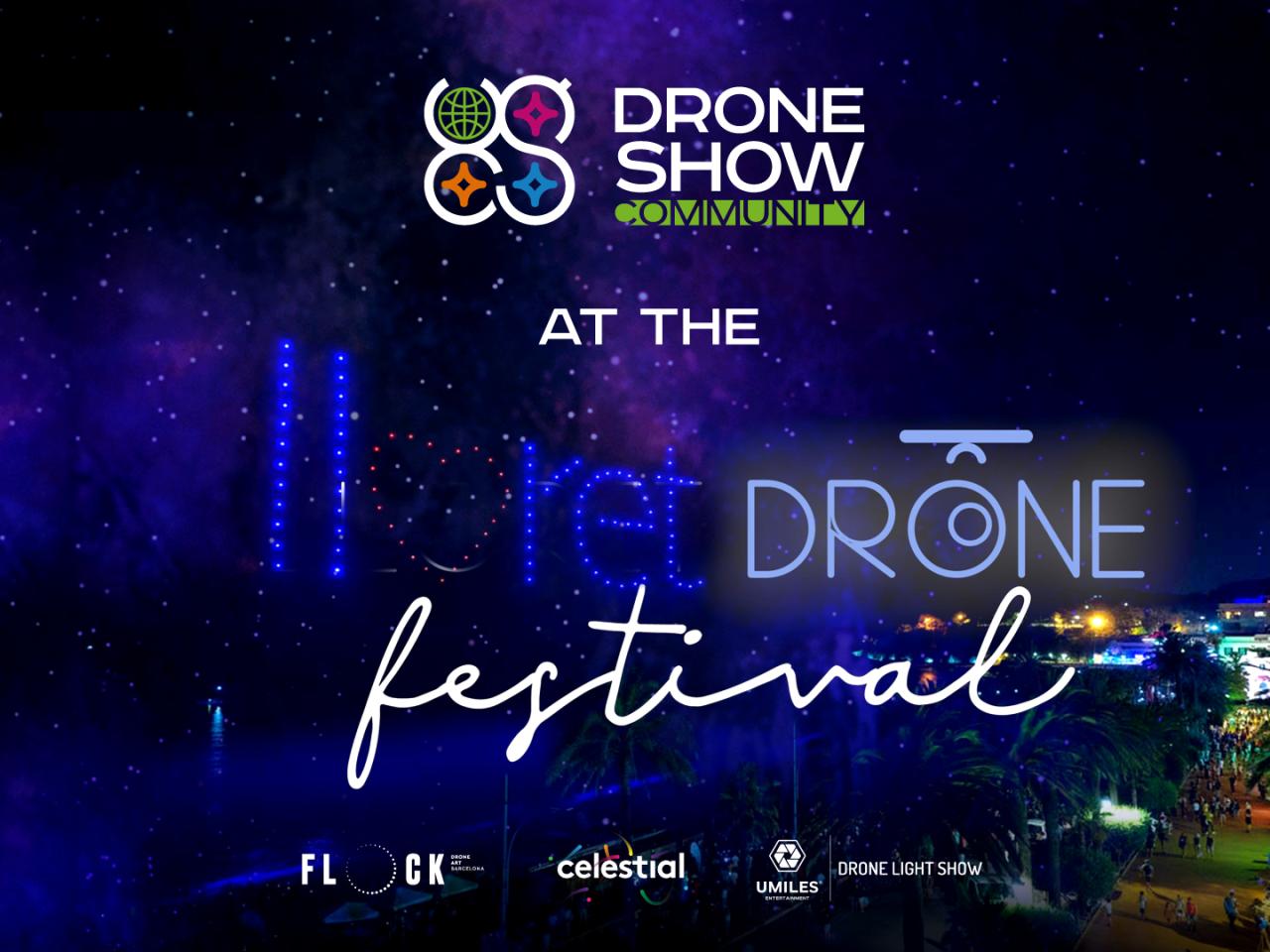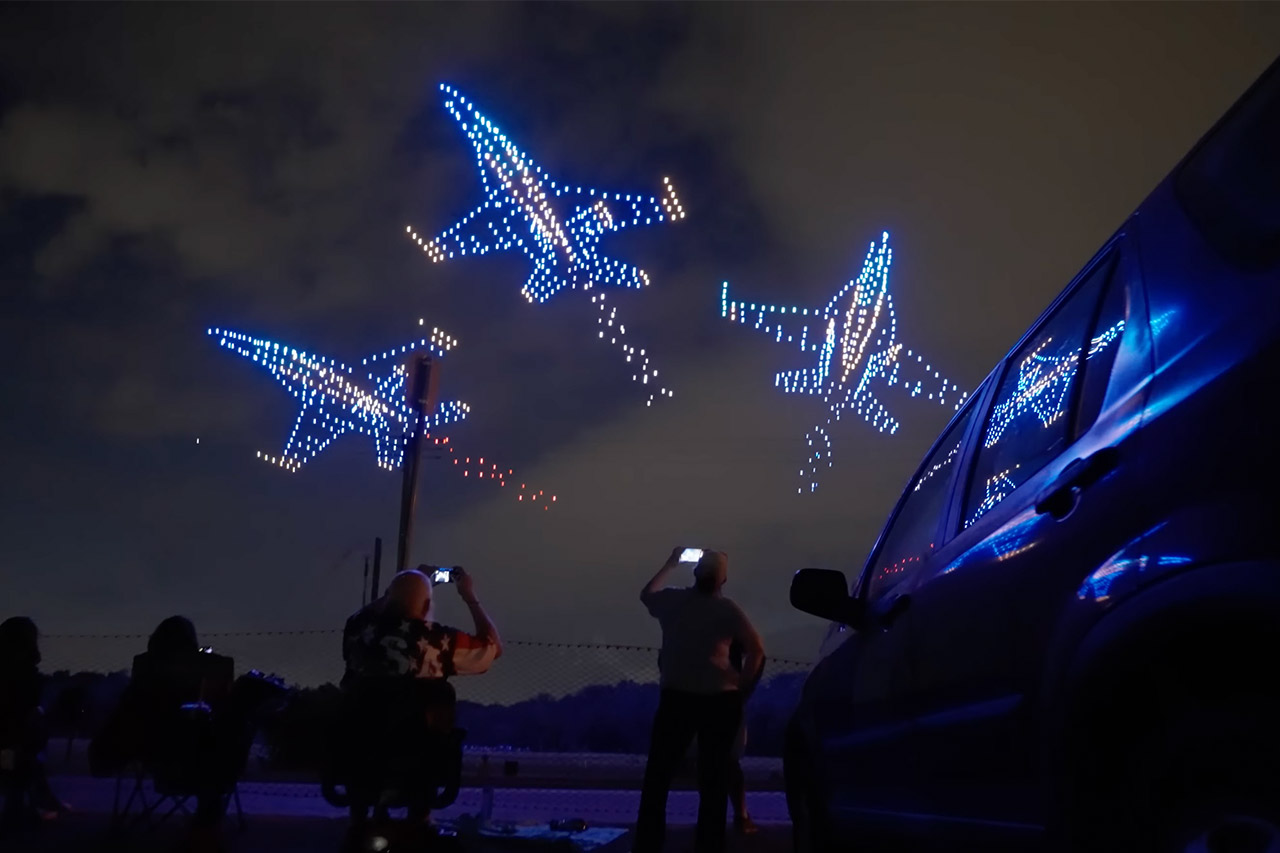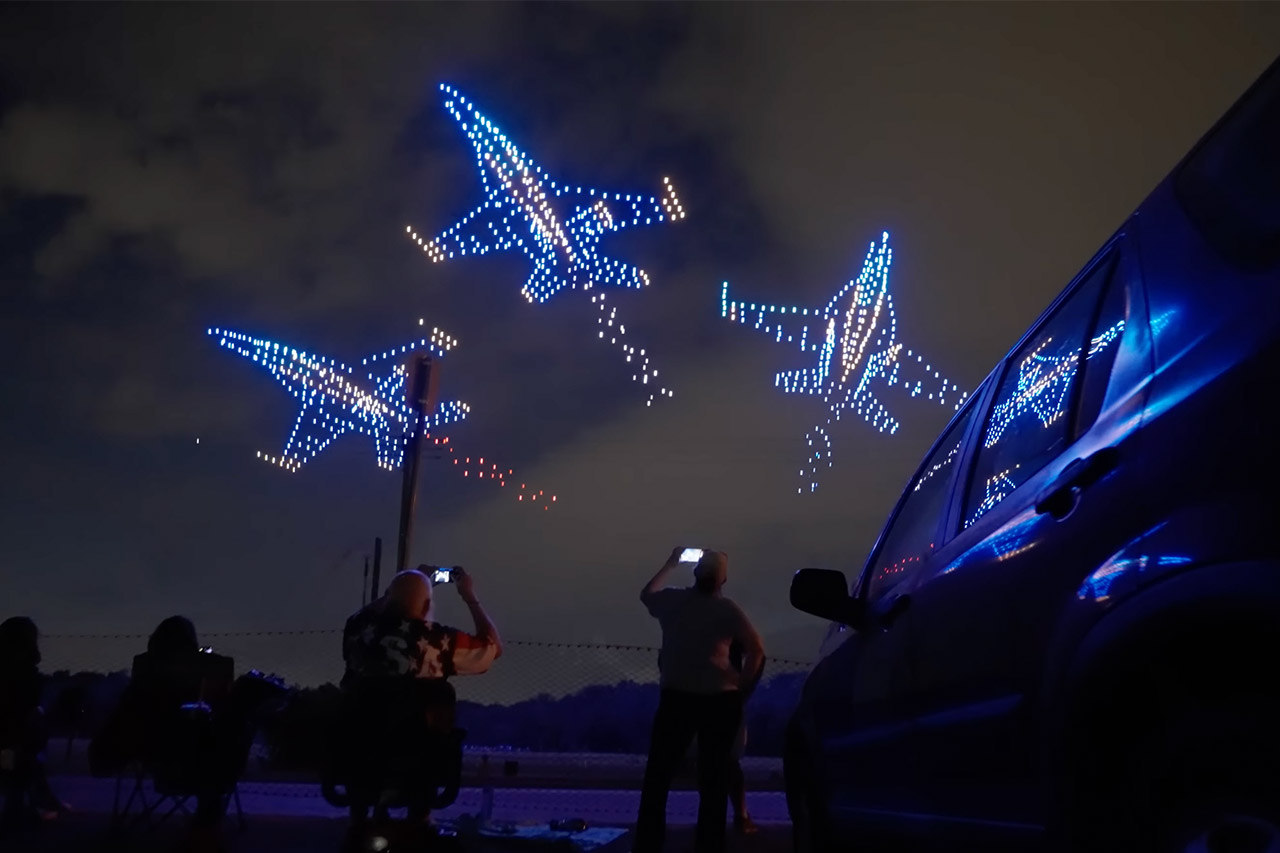Florida Drone Shows: Imagine a breathtaking spectacle of hundreds of drones painting vibrant images across the Florida sky, synchronized to music and storytelling. This guide delves into the captivating world of Florida drone shows, exploring everything from the regulatory landscape and popular locations to the technological marvels and economic impact of these increasingly popular displays.
From dazzling nighttime performances to daytime extravaganzas, Florida offers unique settings for these innovative events. We will examine the diverse types of shows, the intricate planning involved, and the safety protocols that ensure a seamless and unforgettable experience for both organizers and spectators. We’ll also explore the economic benefits these shows bring to the state, highlighting their contribution to tourism and local economies.
Florida Drone Show Regulations and Permits

Organizing a drone show in Florida requires navigating specific regulations and obtaining the necessary permits. Understanding the FAA’s rules and the permitting process is crucial for a successful and legal event. This section details the requirements for both commercial and non-commercial drone shows, highlighting key differences and providing a step-by-step guide to obtaining permits.
Florida drone shows offer spectacular nighttime entertainment, showcasing innovative choreography and dazzling light displays. For a similar experience, consider checking out the impressive displays at the orlando drone show , known for its vibrant visuals and large-scale productions. Returning to Florida, the state’s unique landscapes often provide stunning backdrops for these aerial performances, enhancing the overall experience.
FAA Regulations Governing Drone Shows in Florida
Drone shows in Florida fall under the jurisdiction of the Federal Aviation Administration (FAA). Operators must adhere to Part 107 regulations, which include registration of drones, pilot certification, operational limitations (such as maximum altitude and distance from the operator), and airspace restrictions. Specific regulations regarding nighttime operations, multiple drone operations (as required for a show), and the use of visual observers are also critical.
Failure to comply with these regulations can result in hefty fines and legal repercussions.
Permitting Process for Drone Shows in Florida
The permitting process varies depending on the location and scale of the drone show. For large-scale events, permits may be required from multiple agencies, including the FAA, local city or county governments, and potentially park authorities or other relevant land management agencies. The application process typically involves submitting detailed flight plans, safety assessments, insurance documentation, and potentially an environmental impact statement, depending on the location and nature of the event.
Florida’s drone shows are known for their spectacular displays of coordinated light and movement. However, the recent events surrounding the kazan drone attack highlight the potential for drones to be used in ways that are far from entertainment. This stark contrast underscores the importance of responsible drone use and robust security measures, ensuring Florida’s drone shows remain safe and captivating spectacles.
For example, a beach show might require additional permits related to coastal access and environmental protection.
Commercial vs. Non-Commercial Drone Show Permits

The permit requirements differ significantly between commercial and non-commercial drone shows. Commercial operations, which involve payment or profit, typically face more stringent regulations and a more complex permitting process. This includes additional insurance requirements, proof of liability coverage, and potentially a more detailed safety plan. Non-commercial shows, such as those organized for private events or community celebrations, may have less stringent requirements but still need to comply with all applicable FAA regulations and local ordinances.
Key Steps in Obtaining Drone Show Permits
| Step | Action | Responsible Party | Timeline |
|---|---|---|---|
| 1 | Determine show location and scope | Event Organizer | Initial planning phase |
| 2 | Check FAA airspace restrictions | Event Organizer/Drone Pilot | Early planning phase |
| 3 | Secure necessary permits (FAA, local authorities) | Event Organizer | 4-8 weeks prior |
| 4 | Develop a comprehensive safety plan | Event Organizer/Drone Pilot | 4-6 weeks prior |
| 5 | Obtain insurance coverage | Event Organizer | 6-8 weeks prior |
| 6 | Submit permit applications | Event Organizer | 8-12 weeks prior |
| 7 | Coordinate with local authorities | Event Organizer | Ongoing |
Popular Locations for Florida Drone Shows
Florida offers a variety of stunning locations suitable for drone shows. The selection of a venue depends on factors like airspace, audience visibility, accessibility, and the theme of the show. This section highlights five popular locations, outlining their unique characteristics and suitability for different types of drone shows.
Florida drone shows are becoming increasingly popular, offering spectacular nighttime entertainment. For those interested in experiencing the breathtaking visuals and innovative technology, you can find more information and potential show dates by visiting the website for a specific event, such as this one: florida drone show. These shows often feature hundreds of drones performing synchronized aerial displays, creating unforgettable memories for attendees.
The future of Florida drone shows looks bright, with advancements in drone technology promising even more impressive performances.
- Cocoa Beach Pier: Offers a dramatic coastal backdrop, good audience visibility, but requires careful consideration of airspace restrictions due to nearby airports and air traffic.
- St. Augustine’s historic district: Provides a unique historical setting, but presents challenges related to airspace restrictions around the city and potential obstacles.
- Walt Disney World Resort (with appropriate permits): While requiring extensive permitting, it provides unparalleled infrastructure, audience reach, and a controlled environment.
- Everglades National Park (with appropriate permits): Offers a vast and unique natural setting, but requires stringent environmental permits and careful planning to avoid disturbing wildlife.
- Large city parks in major metropolitan areas (e.g., Bayfront Park in Miami): These offer a balance of accessibility, audience capacity, and controlled environments but need careful coordination with city authorities.
Types of Drone Shows in Florida
Florida’s drone show landscape is diverse, encompassing various themes and styles. From holiday-themed extravaganzas to corporate events and artistic performances, the creativity and technical capabilities are constantly evolving. This section explores the common types of drone shows and their unique characteristics.
Examples of Drone Show Types
- Holiday-themed shows: Often feature patriotic or festive designs, utilizing synchronized drone movements and lighting effects to create visually stunning displays. Drones used are typically smaller, brighter models capable of intricate choreography.
- Corporate events: These shows are tailored to specific company branding and messaging, often integrating logos, product imagery, and promotional messages into the drone choreography. The choice of drones and lighting effects depends on the branding and message.
- Artistic performances: These shows aim to create a unique artistic experience, using drone formations and lighting to tell a story or express a theme. This type requires highly skilled choreography and may utilize drones with advanced lighting and maneuverability.
Technological Aspects of Florida Drone Shows

The technology behind a successful drone show is complex and multifaceted. This section explores the key technological components, from drone models and flight controllers to safety protocols and communication systems.
Drone Technology and Systems
Modern drone shows utilize fleets of specialized drones equipped with advanced flight controllers, GPS systems, and sophisticated lighting systems. The drones themselves are often custom-built or modified to meet the specific requirements of the show. Flight controllers manage the individual drone movements, while specialized software orchestrates the overall choreography. Reliable communication systems are crucial for real-time control and monitoring of the drone fleet.
Safety protocols, including redundancy systems and emergency landing procedures, are essential for a successful and safe show.
Flowchart: Planning and Executing a Drone Show
A simplified flowchart would show the following sequential steps: 1. Conceptualization and Design; 2. Permitting and Approvals; 3. Drone Selection and Testing; 4. Choreography and Programming; 5.
Site Survey and Setup; 6. Rehearsal and Testing; 7. Show Execution; 8. Post-Show Analysis and Debrief.
Economic Impact of Florida Drone Shows
Drone shows contribute significantly to Florida’s economy, impacting tourism, entertainment, and related industries. This section examines the economic benefits and stakeholders involved.
Economic Benefits of Drone Shows
| Economic Impact | Description | Example |
|---|---|---|
| Tourism Revenue | Increased tourist spending on accommodation, dining, and other activities related to the drone show events. | A major drone show attracting 10,000 tourists could generate millions in revenue for local businesses. |
| Job Creation | Creation of jobs in various sectors, including drone piloting, event management, technical support, and hospitality. | A large-scale drone show could create dozens of temporary and permanent jobs. |
| Increased Local Spending | Increased spending at local restaurants, hotels, and shops by attendees and show organizers. | Local businesses benefit from increased foot traffic and sales. |
| Brand Promotion | Opportunity for businesses to sponsor drone shows, increasing brand visibility and awareness. | Companies can leverage drone shows for marketing and advertising. |
Safety and Security Considerations
Prioritizing safety and security is paramount for any drone show. This section details the necessary measures to protect both the audience and the environment.
Safety Measures and Protocols
Safety protocols include establishing a controlled airspace, using redundant communication systems, employing qualified drone pilots, and having a comprehensive emergency response plan. Risk mitigation strategies involve thorough pre-flight checks, weather monitoring, and crowd management. Safety guidelines emphasize strict adherence to FAA regulations and best practices for multiple drone operations. Clear communication channels between the drone operators, event organizers, and emergency services are crucial.
Marketing and Promotion of Florida Drone Shows
Effective marketing is essential for attracting a large audience. This section Artikels strategies for promoting drone shows in Florida.
Marketing Strategies
A successful marketing plan leverages social media platforms, targeted advertising campaigns, public relations outreach, and collaborations with local tourism boards and media outlets. Creating engaging video content showcasing the drone show’s visual spectacle is crucial. Pre-event hype building through social media contests and early bird ticket discounts can increase anticipation and sales. Collaborating with influencers and bloggers can further amplify reach and generate buzz.
Visual Aspects of a Florida Drone Show
The visual elements of a drone show are critical for creating a memorable experience. This section describes how lighting, choreography, and storytelling contribute to the overall impact.
Creating a Captivating Visual Experience, Florida drone show
A hypothetical drone show in Florida could depict the state’s diverse landscapes using vibrant lighting effects and synchronized movements. For example, the show could start with drones forming the Artikel of the Florida coastline, transitioning into images of palm trees, beaches, and wildlife. The choreography could use dynamic formations, changing colors, and patterns to evoke emotion and create a narrative.
The use of music and sound effects would further enhance the immersive experience. The climax could feature a large, dynamic formation representing the state’s iconic imagery, concluding with a breathtaking finale.
Florida drone shows represent a vibrant intersection of technology, artistry, and entertainment. Their ability to transform the night sky into a canvas of light and movement offers a unique and unforgettable experience. As this technology continues to evolve, we can expect even more innovative and awe-inspiring displays to grace the Florida skies, solidifying their place as a significant contributor to the state’s tourism and entertainment sectors.
Understanding the regulations, technological aspects, and safety protocols is crucial for the continued growth and success of this exciting industry.
FAQ Overview: Florida Drone Show
What types of drones are typically used in Florida drone shows?
A variety of drones are used, often chosen based on payload capacity, flight time, and lighting capabilities. Many shows utilize specialized drones designed for synchronized flight and intricate choreography.
How much does it cost to put on a drone show in Florida?
Costs vary greatly depending on the scale, duration, complexity of the choreography, and the number of drones involved. Factors such as permitting fees, insurance, and technical crew also contribute to the overall expense.
What is the best time of year to hold a drone show in Florida?
The best time depends on the specific location and weather conditions. Generally, the drier months (November through April) offer the most consistent weather for outdoor events.
Are there any restrictions on where drone shows can be held?
Yes, airspace restrictions, proximity to airports, and local ordinances all play a role in determining suitable locations. Obtaining necessary permits and adhering to FAA regulations is essential.
